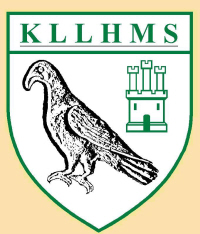The Church Lane and Alexandra Road Schools
This account describes the history of early school buildings in Kings Langley attended by generations of village youngsters. This Society would be very pleased to hear of any memories of times at these schools from past pupils.
The original purpose-built village school in Church Lane, a National School (Church of England), was built in 1838 on land, which, according to the Tithe Apportionment Survey of 1835, had been part of an 18 acre 37 perch field, plot 571, known as Church Field. This was land owned by the Earl of Essex and farmed (arable) by John Betts junior.
It had been the committee of subscribers to the Sunday School who organised the planning of a two room village school. The cost of construction was put at £215-10s to be met by both local subscriptions and a grant of £76 from the National Society.
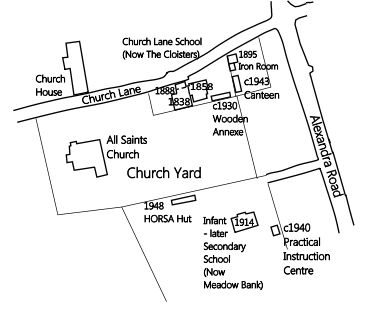
In 1840 a School of Industry opened for girls over 7, probably situated in the girls’ department. The purpose was to train the daughters of labourers in practical home skills such as sewing with some writing and arithmetic, with a view to them being domestic servants. The School of Industry was an alternative to plait schools (of which there was one in Chipperfield) and it received a public grant in 1861 but apparently closed in 1881 when proper school attendance became compulsory. Some plaiting was recalled as having taken place by the infants under Miss Bonaker at the end of the 19th century and quite possibly earlier. By the 1851 census there were 68 boys and 38 girls under 10 attending, which was well over half the boys and girls in the village thirty years before schooling became compulsory.
An extension to the building was made in 1858 to accommodate a separate boys department. This could well refer to the building of the two lower classrooms. By 1886 the school was said to hold 80 boys, 70 girls and 70 infants. The school building was again extended, to ease overcrowding, in 1888 (probably towards Church Lane) at a cost of £532 19s 5d increasing the accommodation by 45 places.
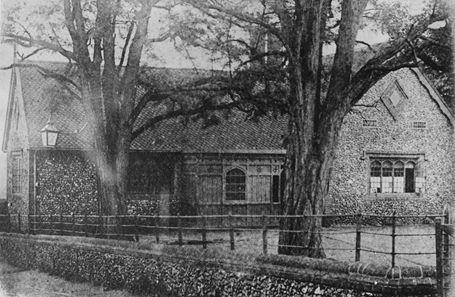
Photo taken some years before the major reconstructionand extension of the building in 1888.
In 1902 a new Education Act transferred the charge of the school maintenance to local authorities and in the following year the school became a mixed one. By 1911 the school was overcrowded again and it was decided to make separate infant provision, for children aged 5 to 7 years old in a new building off Alexandra Road completed in 1914. The Rates Assessment map of 1913 shows that this Infants School was built on arable and meadow land, part of a 25 acre plot occupied by H A Brown and owned by E H Lloyd. The Infant School building is named as such on the 1924 Ordnance Survey map.
Allan Norman Butler in his memoirs ‘Does the Lark Still Sing’ recalled how in 1925, on his first day at school he was taken ‘up a gravel track between iron railings and led into the playground where it seemed hordes of children were waiting to go into school ... Miss Jarman had then been headmistress since October 1919’. In 1944 the Headmistress was Miss Martin who was to be succeeded soon after by Miss Skinner.
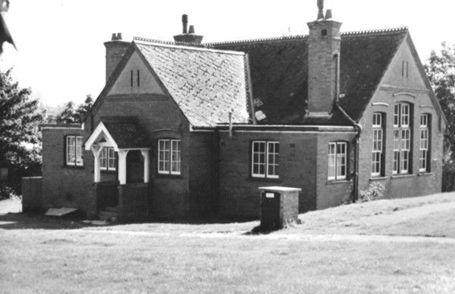
Alexandra Road Infant School built in about 1914
Allan Butler also related that around 1930 the Church Lane school had again become overcrowded. ‘Space for additional new classrooms was to be in the old churchyard and a number of trees had to be cut down to make the space available’. This refers to the wooden annexe with the veranda running the length of three classrooms as described by Keith Johnson in his Memoirs of Kings Langley. Built by local builder Provis Thorne, the cost of £545 was raised by public subscription. Also mentioned was another wooden building located on the lower side of the Infants School (on the Alexandra Road site) for woodwork and needlework in the early 1940s known as the Practical Instruction Centre. Allan Butler described how, on the Church Lane school site, a corrugated iron building at the bottom of lower playground, surrounded by the school garden, was put in some sort of order and this served for woodwork lessons and as a science laboratory. It seems likely that this was the same building described in ‘The History of Kings Langley editor L M Munby’, Technical instruction had been undertaken in the Iron Room which was put up in Dr. Fisher’s field in 1892. This was removed to Church Lane in 1895, bought for £70, with the help of a County Council Grant of £20 in 1900, and handed over to the Day School in 1919. It was wired for electricity in 1933 for £14-9s. This building was also known as Caxton Hall shown on page 98 of ‘Kings Langley: A Hertfordshire Village’ by Scott Hastie. It was demolished in the early 1950’s.
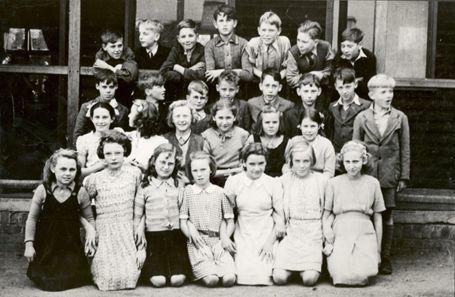
Note the original veranda was not filled in
H J Adlam, who had succeeded Mr E H Clymo and Mr E Toms before him, wrote a review of State Education in Kings Langley in 1945. The Church Lane school, of which he was Head, had provision for 280 pupils although there were 310 on the roll in eight classes, one of which was in the canteen. The provision of mid-day meals in a school canteen below the lower playground was originally a war-time project and catered for some 300 children from the two schools. The separate Infants School had accommodation for 100 pupils. The Church still had the responsibility for the structure of the school while all other running costs were met by the local education authority, Hertfordshire County Council. The selective entrance examination was in operation at this time.
The 1944 Education Act raised the school leaving age again, this time to 15, to be eventually enforced in 1947. On October 8th 1947 there was an extraordinary meeting of the combined managers of the County Council Infants School and the Church of England School. In confirmation of prior discussions it was agreed that the school building in Alexandra Road, instead of serving as an infant school, should be part of a senior school along with a new prefabricated HORSA hut (Hut Operation for the Raising of School leaving Age) supplied by the Ministry of Works. Mr H J Adlam continued as Headmaster.
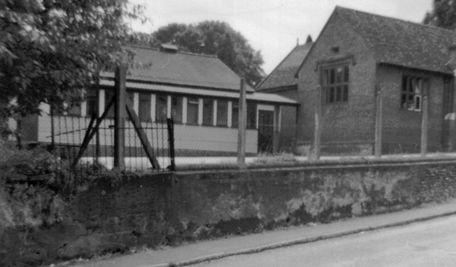
Note the veranda was later enclosed and glazed
The infants school was transferred from the Alexandra Road site to be amalgamated with the juniors who remained at the original Church Lane school.
In March 1948 The Diocesan Board of Religious Education, following a resolution of the managers of the C of E Church Lane school, informed the County Council that they intended to discontinue the school, that is to say relinquish its status as a Church School. This confirmed the formation of Kings Langley Secondary School (County Council) on the Alexandra Road site and Kings Langley County Primary School in Church Lane, so now both were County Council schools. The appointed Headmistress for KLCPS was Miss L D Skinner, previously Head of the Infants School. The village Guide Hut also served as a classroom at this time and Church House was also used. The canteen would continue to serve both schools. This reorganisation took effect in September 1948.

Church Lane School
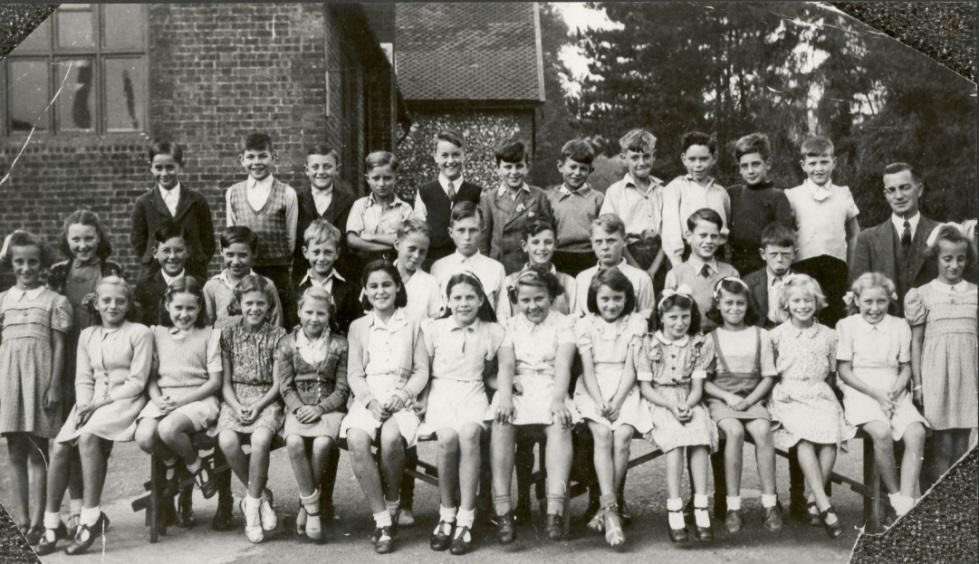
School pupils in about 1947. Bernard Morris is the teacher. KISMS : 91.456b.jpg
Note the 6th seated girl from the left in the front is Jill Penwarden (née Young).
In 1960 the secondary pupils also vacated the Alexandra Road site moving to a new purpose built school in Love Lane (now rebuilt 2017).
Mr F Talbot was appointed following the retirement of Miss Skinner in 1963. Between 1965 and 1968 the junior age children occupied the vacated Alexandra Road buildings until they moved to a new school building in Common Lane with the Church Lane based infants and also a nursery joining them there in 1984. Both the 1838 Church Lane buildings and the 1914 Alexandra Road school buildings were demolished in 1987.
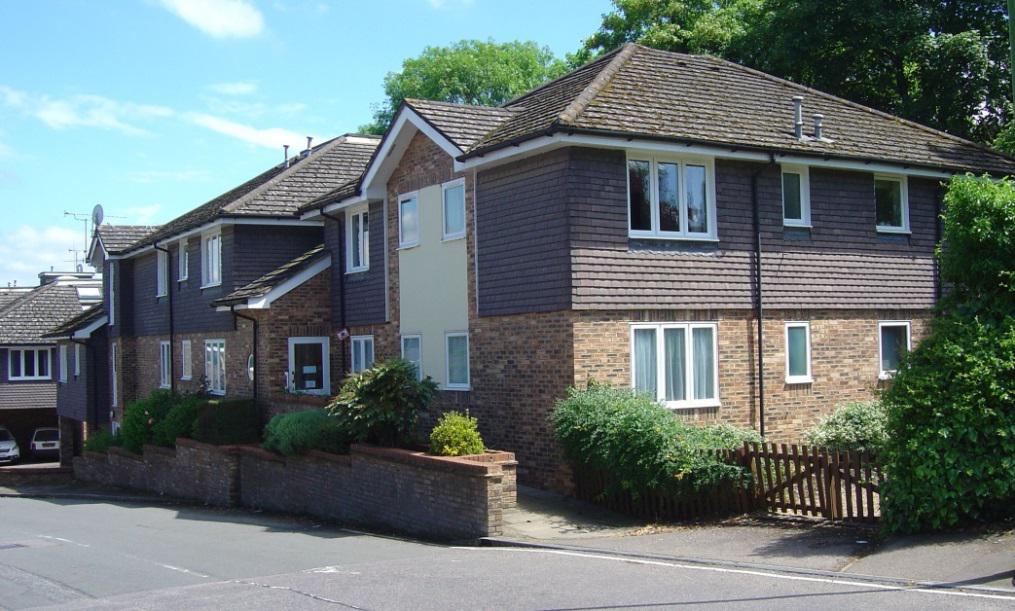
Church Lane School site as it is now – The Cloisters
Sheltered accommodation for the elderly, The Cloisters, now occupies the original Church Lane site while the Alexandra Road school site is now housing called Meadow Bank.
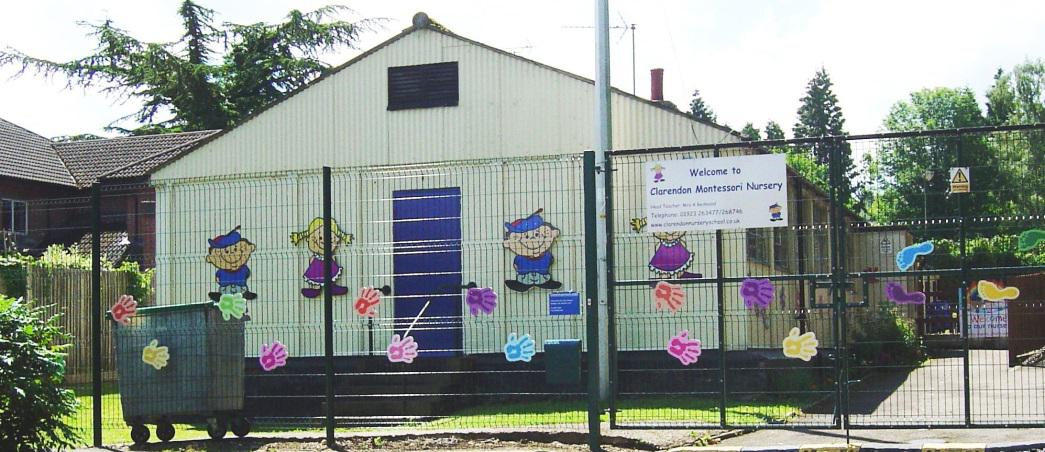
It is ironic that the only one of all these splendid old school buildings to remain, albeit still in use as educational premises as the Clarendon Montessori Nursery, is the post war HORSA hut, built as a temporary construction in 1948 with a predicted 10 year lifespan!
by Mike Reveley
